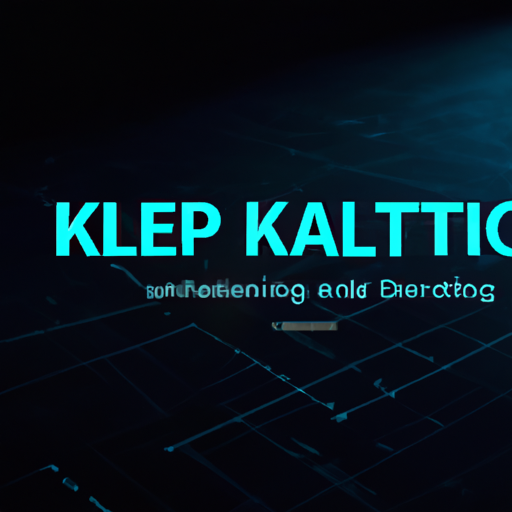Introduction
In today’s digital age, Cybersecurity has become a critical concern for individuals and organizations alike. With the increasing number of cyber threats, it has become essential to have a robust security system in place to protect sensitive data and information. One of the most crucial aspects of Cybersecurity is Reconnaissance, which involves gathering information about potential targets to identify vulnerabilities and potential attack vectors. In this article, we will explore how Kali Linux 2023.2 can be used to master Reconnaissance and enhance your InfoSec toolkit.
What is Kali Linux?
Kali Linux is a Debian-based Linux distribution that is specifically designed for digital forensics and Penetration Testing. It is a powerful tool that comes pre-installed with a wide range of security tools and utilities that can be used for various security-related tasks, including Reconnaissance, vulnerability assessment, and Penetration Testing.
Why Use Kali Linux for Reconnaissance?
Kali Linux is an excellent choice for Reconnaissance because it comes with a wide range of tools that can be used to gather information about potential targets. These tools are specifically designed for Reconnaissance and can help you identify vulnerabilities and potential attack vectors. Some of the key benefits of using Kali Linux for Reconnaissance include:
- Pre-installed tools: Kali Linux comes with a wide range of pre-installed tools that can be used for Reconnaissance, including Nmap, Recon-ng, and Maltego.
- Easy to use: Kali Linux is designed to be user-friendly, even for those who are new to Cybersecurity. The tools are easy to use and come with detailed documentation and tutorials.
- Customizable: Kali Linux is highly customizable, which means that you can add or remove tools based on your specific needs.
- Open-source: Kali Linux is an open-source tool, which means that it is free to use and can be modified to suit your specific needs.
Tools for Reconnaissance in Kali Linux
Kali Linux comes with a wide range of tools that can be used for Reconnaissance. In this section, we will explore some of the most popular tools and how they can be used for Reconnaissance.
Nmap
Nmap is a popular tool that can be used for network exploration and security auditing. It is a powerful tool that can be used to identify hosts and services on a network, as well as potential vulnerabilities. Nmap can be used to perform a wide range of tasks, including:
- Host discovery: Nmap can be used to identify hosts on a network.
- Port scanning: Nmap can be used to identify open ports on a host.
- Service detection: Nmap can be used to identify the services running on a host.
- Vulnerability scanning: Nmap can be used to identify potential vulnerabilities on a host.
Recon-ng
Recon-ng is a powerful tool that can be used for Reconnaissance and information gathering. It is a modular framework that can be used to automate the process of gathering information about potential targets. Recon-ng can be used to perform a wide range of tasks, including:
- Footprinting: Recon-ng can be used to gather information about a target’s web presence, including social media profiles, email addresses, and domain names.
- Scanning: Recon-ng can be used to scan a target’s web applications for vulnerabilities.
- Reporting: Recon-ng can be used to generate reports based on the information gathered during the Reconnaissance process.
Maltego
Maltego is a powerful tool that can be used for Reconnaissance and information gathering. It is a graphical tool that can be used to visualize the relationships between different pieces of information. Maltego can be used to perform a wide range of tasks, including:
- Footprinting: Maltego can be used to gather information about a target’s web presence, including social media profiles, email addresses, and domain names.
- Scanning: Maltego can be used to scan a target’s web applications for vulnerabilities.
- Visualizing relationships: Maltego can be used to visualize the relationships between different pieces of information, such as email addresses and social media profiles.

Case Study: Reconnaissance in Action
To illustrate the power of Reconnaissance, let’s take a look at a real-world example. In 2017, Equifax, one of the largest credit reporting agencies in the United States, suffered a massive data breach that exposed the personal information of over 143 million people. The breach was caused by a vulnerability in Equifax’s web application software, which allowed hackers to gain access to sensitive data.
The hackers used Reconnaissance techniques to identify the vulnerability and exploit it. They used tools like Nmap and Recon-ng to scan Equifax’s network and identify potential vulnerabilities. Once they identified the vulnerability, they used a tool called Apache Struts to exploit it and gain access to Equifax’s database.
This case study highlights the importance of Reconnaissance in Cybersecurity. By using Reconnaissance techniques, the hackers were able to identify a vulnerability that allowed them to gain access to sensitive data. If Equifax had implemented better security measures and conducted regular vulnerability assessments, they may have been able to prevent the breach from occurring.
Conclusion
Reconnaissance is a critical aspect of Cybersecurity, and Kali Linux is an excellent tool for mastering Reconnaissance. With its wide range of pre-installed tools and user-friendly interface, Kali Linux can help you identify vulnerabilities and potential attack vectors. By using tools like Nmap, Recon-ng, and Maltego, you can gather information about potential targets and identify potential vulnerabilities. Remember, the key to effective Reconnaissance is to be thorough and methodical. By taking the time to gather as much information as possible, you can identify potential





